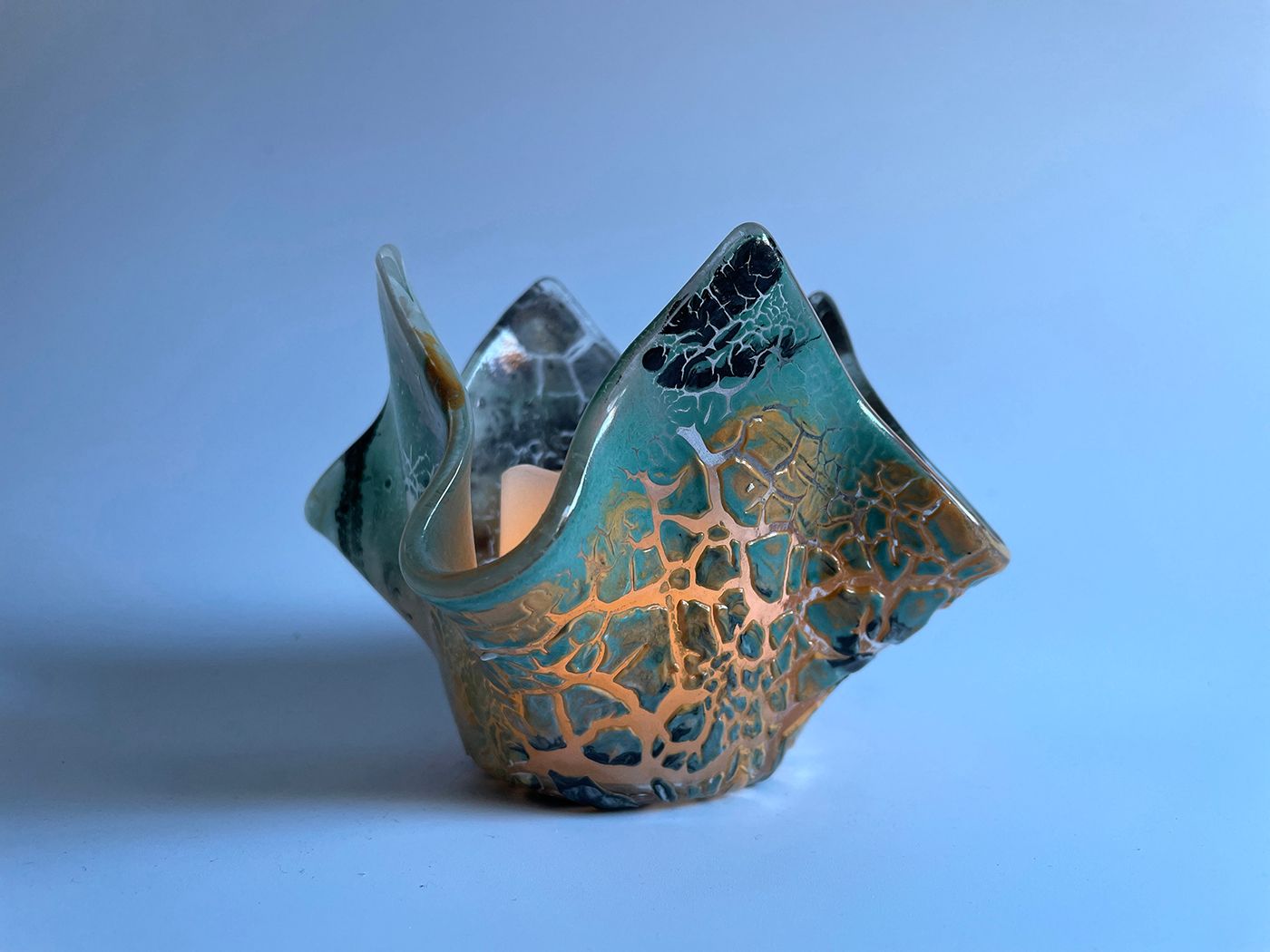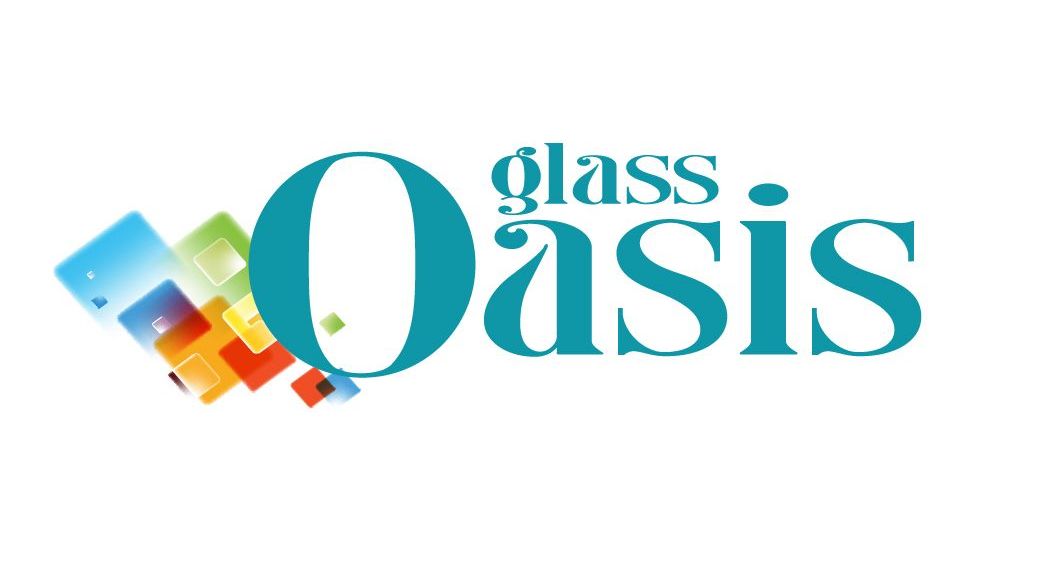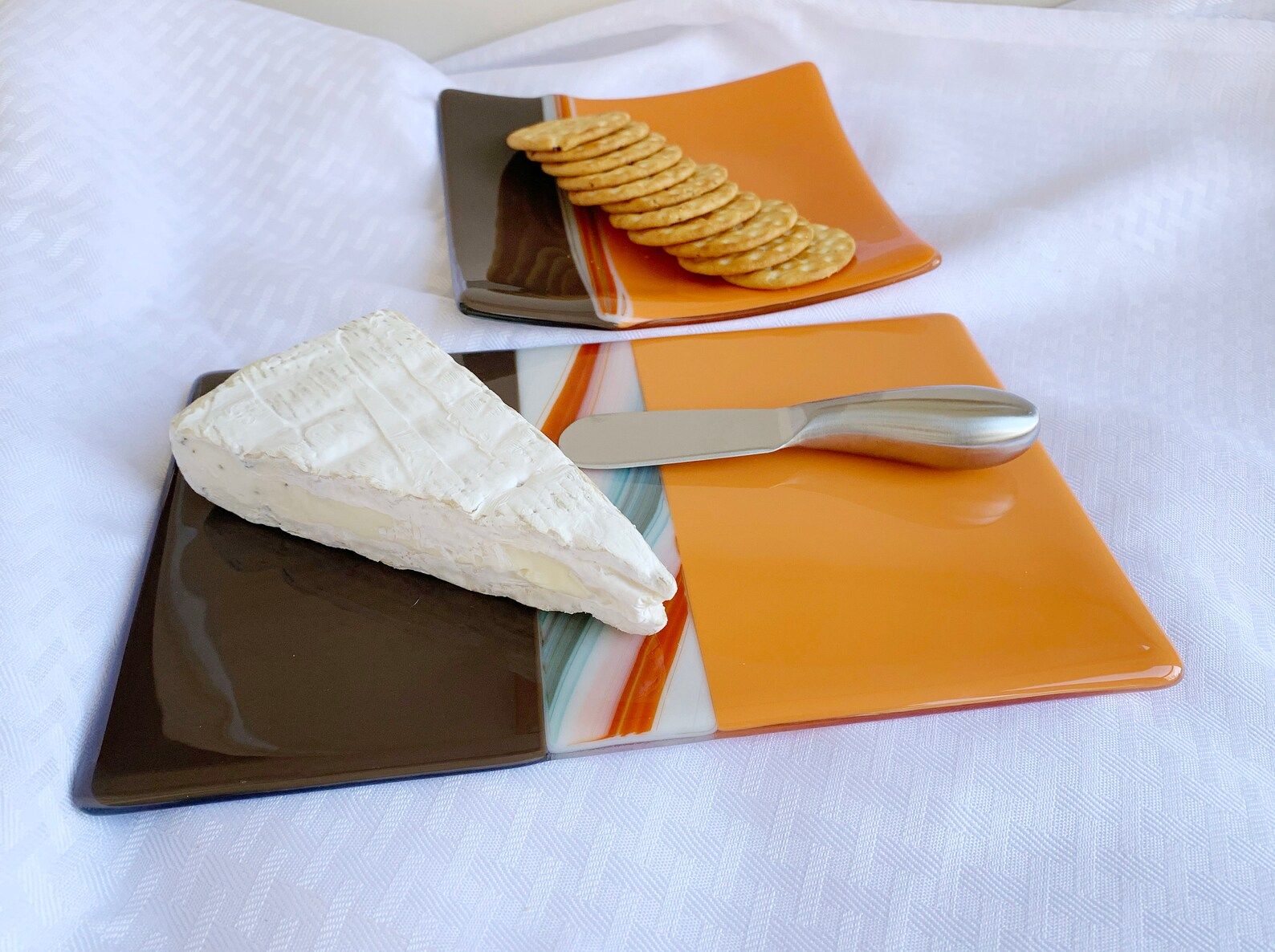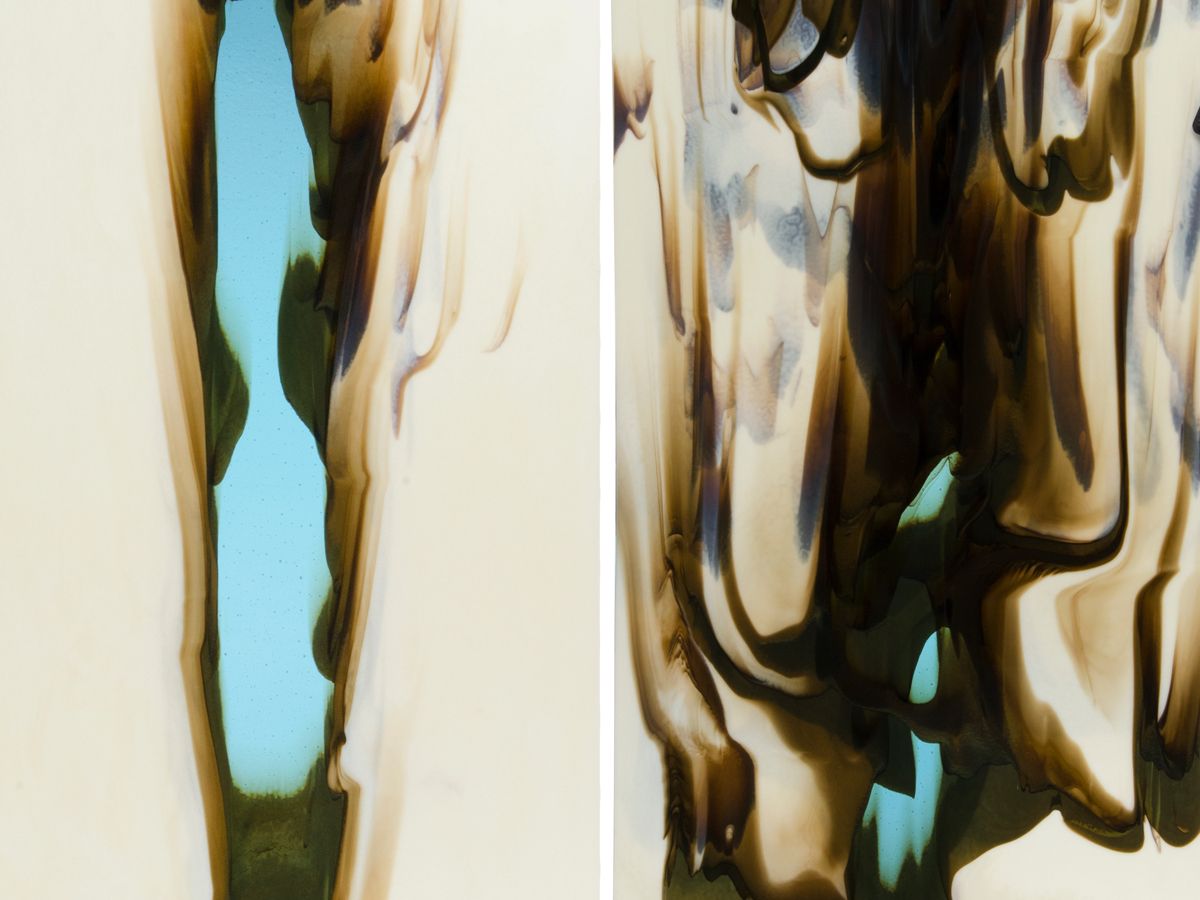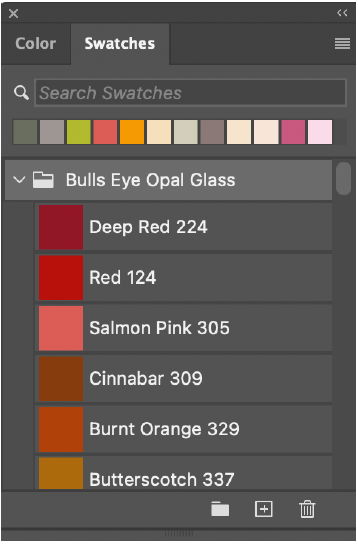Paint Pour on Fused Glass: A Creative
Technique for Stunning Glass Art
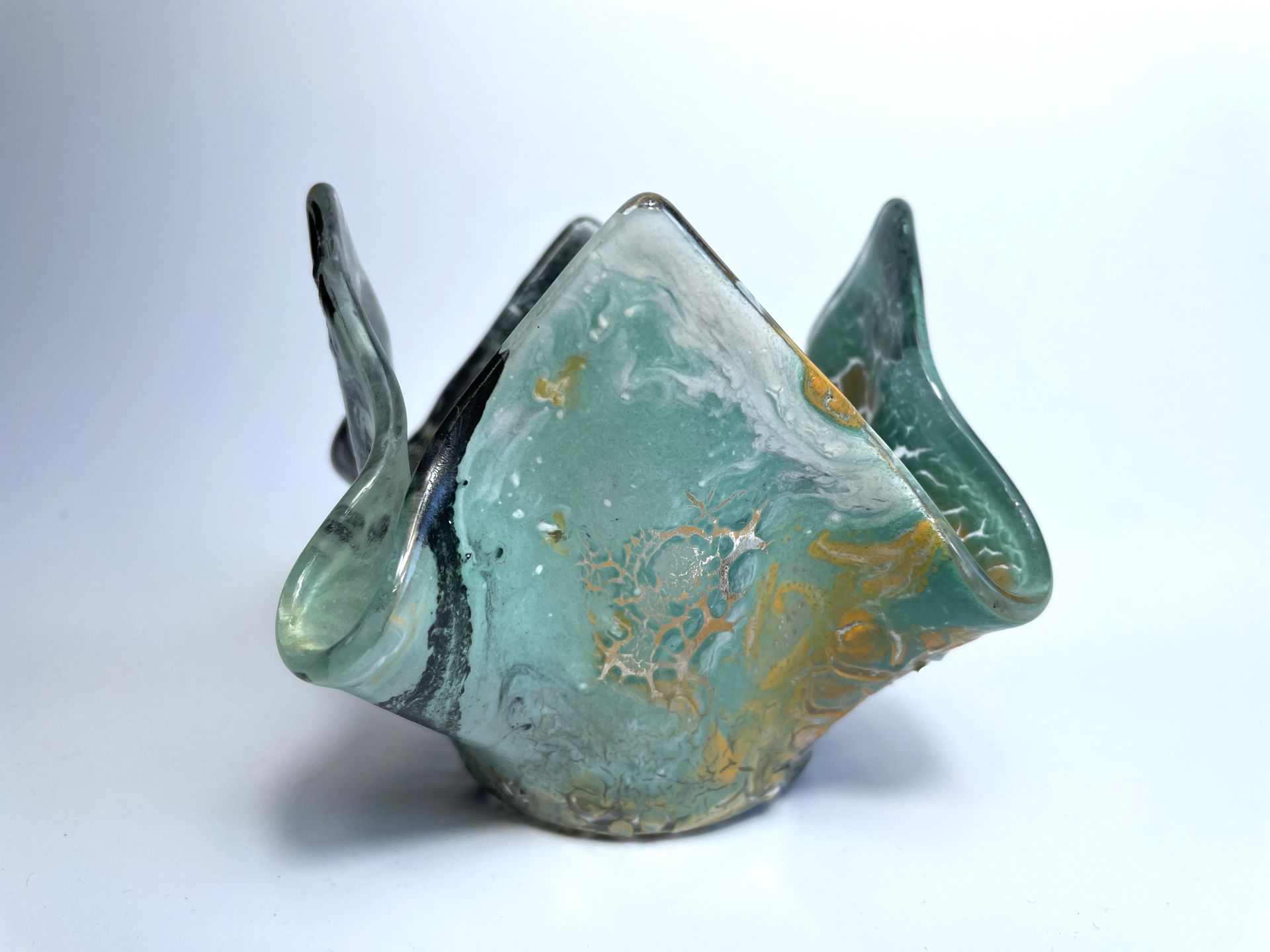
Fused glass is a captivating art form that involves melting layers of colored glass together to create unique and intricate designs. Glass artists have been experimenting with various techniques to enhance the beauty of fused glass, and one such technique gaining popularity is paint pouring.
Paint pouring is a mesmerizing art form involving pouring different colors of acrylic paint onto a canvas or other flat surface to create abstract patterns. This technique has been widely used on various mediums, including wood, canvas, and ceramics. However, in recent years, artists have discovered its potential on fused glass as well. (Please note that acrylic paint is not used when pouring paint on glass as it is not to be fired in a kiln. There are other types of paint, including enamel that are used for fused glass.)
The process of paint pouring on fused glass starts with preparing the glass surface. The glass needs to be perfectly clean and free from any oils or residues. This can be achieved by wiping the glass with rubbing alcohol mixed with water. Once the glass is clean, it is essential to ensure that it lies on a flat surface to avoid any movement during the pour.
Next, the paint is mixed with a pouring medium to achieve the desired consistency. I used Big Mouth Paint from AAE Glass. After the paint and medium are well mixed and poured, one can add various additives like silicone oil or alcohol to create intriguing cells and lacing effects.
Now comes the exciting part – the pour! For the piece above, I mixed four different colors of paint in layers in a cup and poured it onto the glass. I used a flip cup, dirty pour technique to achieve various effects and textures on the glass.
As the paint is poured onto the glass, it starts to spread and merge, creating beautiful patterns and blending of colors. Various tools like skewers or blow dryers can be used to manipulate the paint and design effects. I also tilted the piece of glass at different angles to achieve more painterly effects. The paint will continue to flow and shift even after it is poured, so it's important to be patient and allow the design to evolve naturally.
I've painted scenes on glass with a brush and painted images by loading a string with paint and pulling it across the glass, before fusing the piece. In this case, it was my first pour on clear glass. The paint dried with a few cracks, but the fusing schedule obviously needs adjusting since there are gaps through most of the piece. So, I decided to complete the project by making it a candle holder to see how the light from a candle would show through the piece. Comments it has received include "cool", "beautiful", "unique", "wow, how did you do that?"..
